Removal Procedure
Warning: When servicing brake parts, do not create dust by grinding or sanding brake pads, by cleaning brake parts with a dry brush or with compressed air. Many earlier models or aftermarket brake parts
may contain asbestos fibers which can become airborne if dust is created during servicing. Breathing dust containing asbestos fibers may cause serious bodily harm. A water dampened cloth or water based solution should be used to remove any dust on brake parts.
Equipment is commercially available to perform this washing function. These methods will prevent fibers from becoming airborne.
- Block the front wheels.
- Raise and support the vehicle under the frame rails. Ensure that the vehicle rear wheels are off the floor.
- Release the parking brake.
- Remove the rear tire and wheel assemblies. Refer to
Tire and Wheel Removal and Installation.
- Remove the rear axle lubricant.
- Remove the propeller shaft. Refer to the following list in order to select the correct procedure:
- Remove the rear air brake lines, if equipped. Refer to
Hose and Line Replacement - Nylon Push-In Type Fitting.
- Remove the shift motor assembly, if equipped. Refer to
Two Speed Rear Axle Shift Motor Replacement.
- Remove the differential lock air line tandem axle only, if equipped. Refer to
Hose and Line Replacement - Nylon Push-In Type Fitting.
- Cage the spring brake chambers, if equipped. Refer to
Caging the Rear Air Brake Chamber.
- Remove the rear brake drum, if equipped. Refer to
Brake Drum Replacement.
- Remove the rear hub assemblies. Refer to
Rear Axle Hub, Bearing, Cup, and/or Seal Replacement.
- Remove the rear brake caliper mounting plates, if equipped. Refer to
Rear Brake Caliper Mount Plate Replacement.
- Remove the rear cam brake assembly, if equipped. Refer to
Rear Cam Brake Assembly Replacement.
- Remove the wiring attached to the rear axle housing.
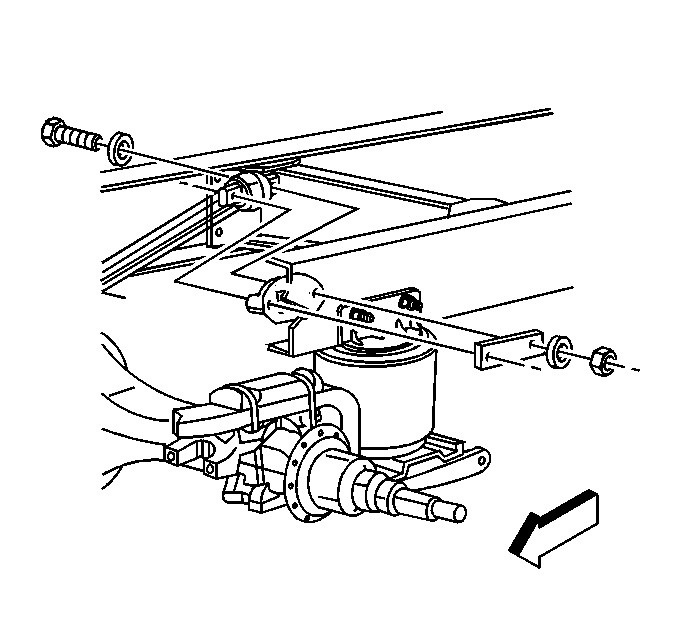
- Remove the rear axle tie rod, if equipped. Refer to
Tandem Axle/Suspension Removal and Installation.
- Remove the rear axle torque rods tandem axle only. Refer to
Torque Rod Replacement.
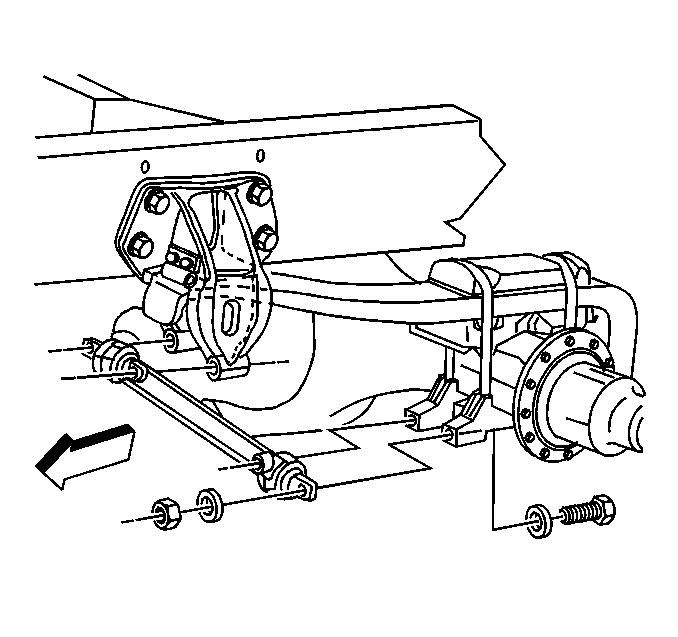
- Remove the rear axle control arms air suspension only. Refer to
Tandem Axle/Suspension Removal and Installation.
- Remove the rear suspension equalizer beams tandem axle only. Refer to
Equalizing Beam Replacement.
- Remove the rear shock absorber from the rear shock absorber lower bracket. Refer to
Shock Absorber Replacement.
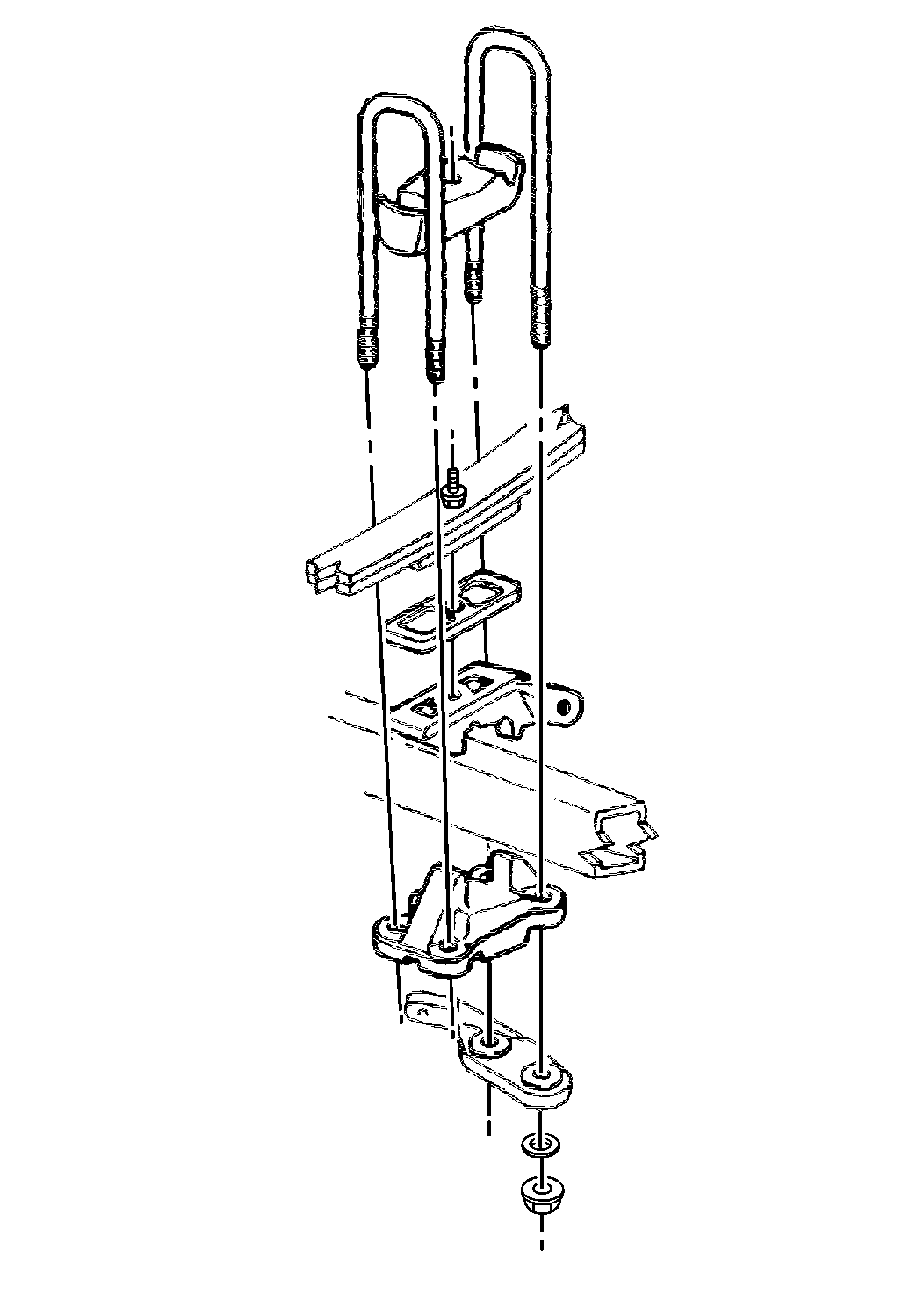
- Remove the following rear spring components:
- Remove the rear shock absorber lower bracket, if equipped. Refer to
Shock Absorber Replacement.
- Remove the rear spring anchor plate bracket.
- Support the axle using a hydraulic transmission dolly with adapters in order to properly handle the axle housing.
- Fasten a chain over the top of the housing and to both sides of the dolly.
- Remove the rear axle housing from the suspension.
- Remove the differential carrier and do the following:
| 27.1. | Set the rear axle housing on an axle stand with the differential carrier facing up. |
| 27.2. | Remove the following differential components: |
| 27.3. | Strike the differential carrier housing with a rubber mallet in order to break the seal. |
| 27.4. | Lift the differential carrier from the rear axle housing. Use a chain lift or equivalent. |
- Clean the differential carrier seal surface.
- Clean the rear brake drum or rear bake rotor, and rear brake assemblies using Brake Parts Cleaner, GM P/N 12345754 (Canadian P/N 993119), or equivalent.
- Clean the rear wheel bearings.
- Inspect the rear axle housing for the following conditions:
Installation Procedure
- Install the differential carrier. Refer to
Differential Replacement.
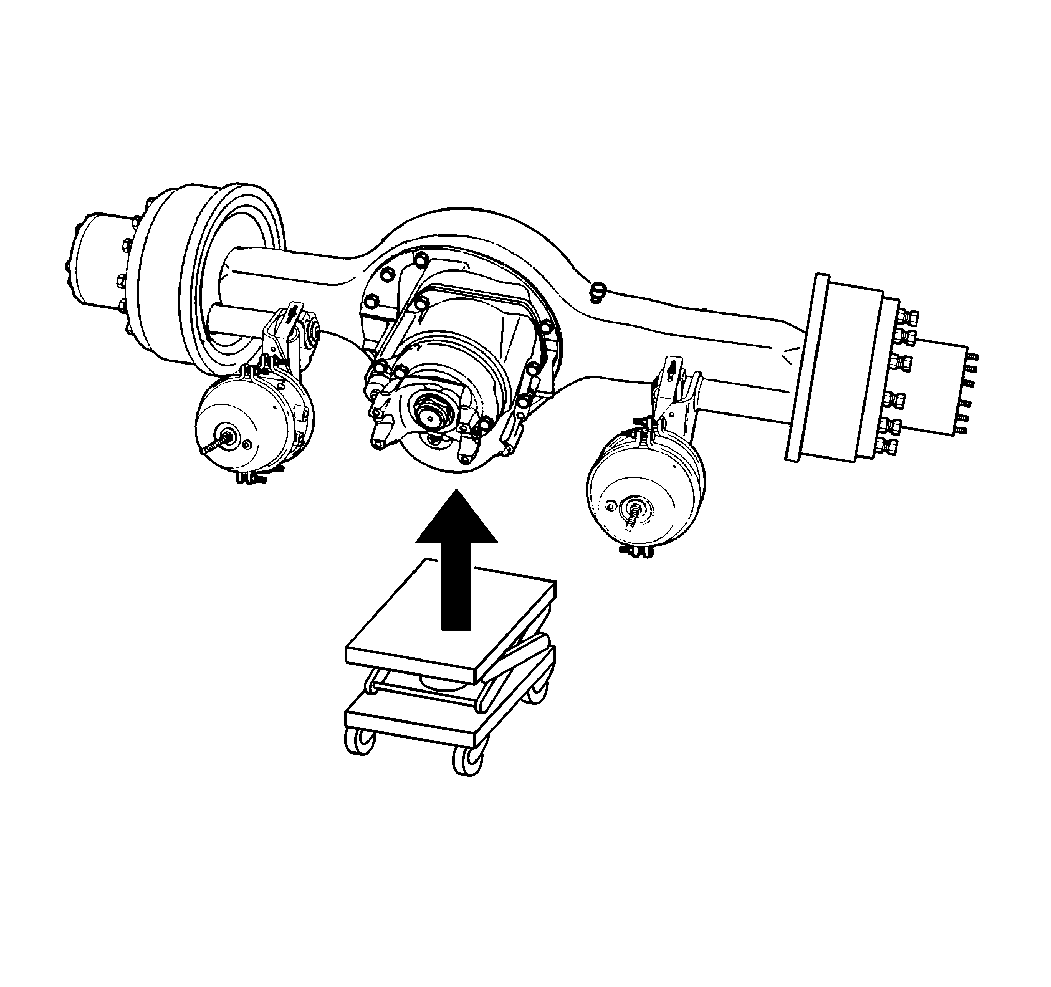
- Support the rear axle housing using a hydraulic transmission dolly with adapters in order to properly handle the rear axle housing.
- Lift the differential carrier and lower the carrier onto the rear axle housing.
- Use a chain lift or equivalent.
- Install the rear axle housing to the rear suspension.
- Fasten a chain over the top of the rear axle housing and to both sides of the dolly.
- Install the rear spring anchor plate bracket.
- Install the rear shock absorber lower bracket, if equipped. Refer to
Shock Absorber Replacement.
Caution: Refer to Fastener Caution in the Preface section.
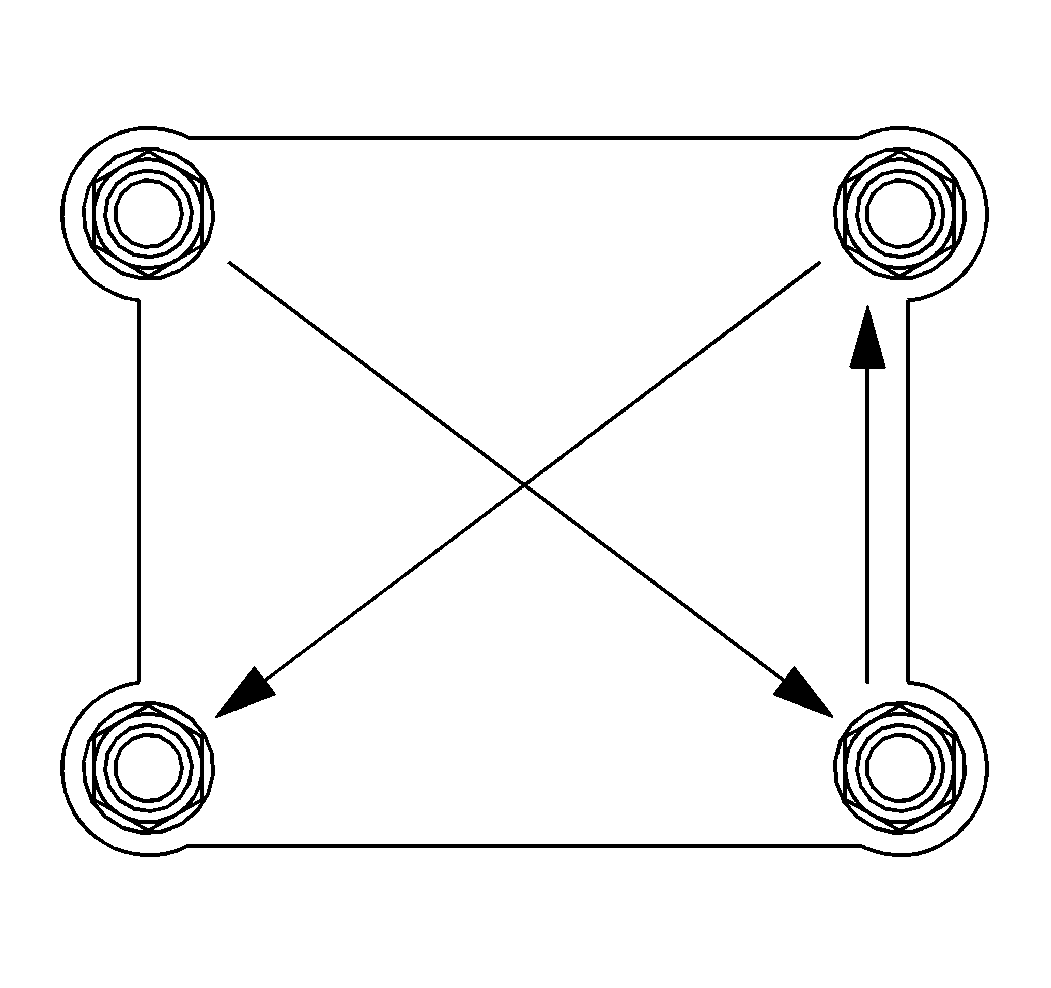
- Install the following rear spring components:
Tighten
For U-bolt nut tightening procedures, refer to
Fastener Tightening Specifications.
- Install the shock absorber to the lower shock absorber bracket. Refer to
Shock Absorber Replacement.
- Install the rear suspension equalizer beams (tandem axle only). Refer to
Equalizing Beam Replacement.
- Install the rear axle control arms air suspension only. Refer to
Tandem Axle/Suspension Removal and Installation.
- Install the rear axle torque rods tandem only. Refer to
Torque Rod Replacement.
- Install the rear axle tie rod, if equipped. Refer to
Tandem Axle/Suspension Removal and Installation.
- Install the wiring to the axle housing.
- Install the rear cam brake assembly, if equipped. Refer to
Rear Cam Brake Assembly Replacement.
- Install the rear brake caliper mounting plates, if equipped. Refer to
Rear Brake Caliper Mount Plate Replacement.
- Install the rear hub assemblies. Refer to
Rear Axle Hub, Bearing, Cup, and/or Seal Replacement.
- Install the rear brake drum, if equipped. Refer to
Brake Drum Replacement.
- Uncage the spring brake chambers, if equipped. Refer to
Caging the Rear Air Brake Chamber.
- Install the differential lock air line, if equipped. Refer to
Hose and Line Replacement - Nylon Push-In Type Fitting.
- Install shift motor assembly, if equipped. Refer to
Two Speed Rear Axle Shift Motor Replacement.
- Install the air brake lines, if equipped. Refer to
Hose and Line Replacement - Nylon Push-In Type Fitting.
- Install the propeller shaft. Refer to the following list in order to select the correct procedure:
Note: Add 0.94 liters (1 quart) of rear axle lubricant to the power divider of the tandem axle front unit, if equipped.
- Install the rear axle lubricant.
- Install the rear tire and wheel assemblies. Refer to
Tire and Wheel Removal and Installation.
- Check for air leaks. Refer to
Air Brake System Testing.
- Inspect for proper brake operation.
- Remove the wheel blocks.





